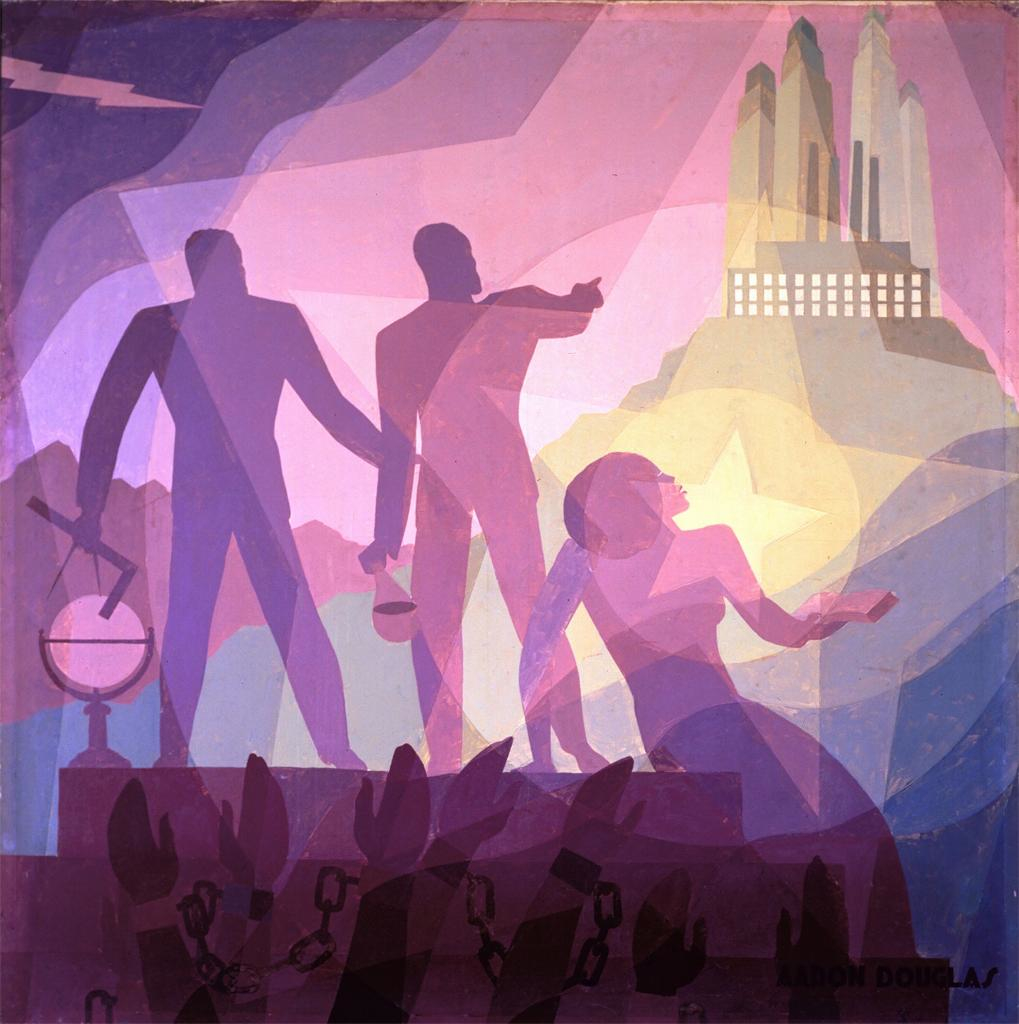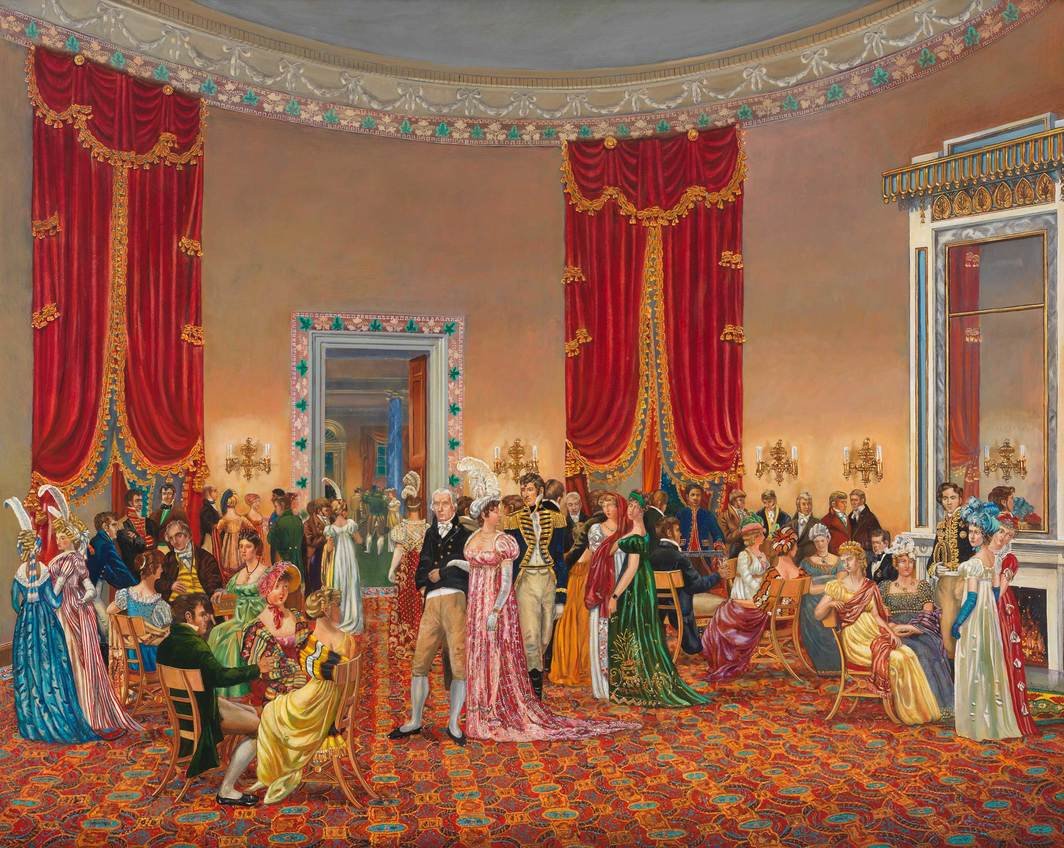Unit Study: The Harlem Renaissance
Celebrate the Harlem Renaissance, a flourishing of African-American culture that lit up the creative landscape of the 1920s with its epicenter firmly located in New York City’s Harlem neighborhood.
See Aaron Douglas’s art (including this 1936 oil painting “Aspiration” and other work by Harlem Renaissance artists at the Archive for Virtual Harlem website.
by Jeremy Harris
Black History Month is the perfect excuse to celebrate the Harlem Renaissance, a flourishing of African-American culture that lit up the creative landscape of the 1920s with its epicenter firmly located in New York City’s Harlem neighborhood.
Read
Souls of Black Folk by W.E.B. DuBois
The sociologist and activist W.E.B DuBois was in many ways the father of the Harlem Renaissance, and in this, his most important work, DuBois made a claim for the re-thinking of African-American identity that was to resonate with a generation of African-Americans. DuBois was himself a remarkable figure—the first African-American to receive a Ph.D. from Harvard University, he wrote many books, founded the Niagara movement, which opposed Booker T. Washington’s policies of conciliation and fought for the rights of African-Americans to vote and enjoy the same privileges as other Americans, Souls of Black Folk memorably and movingly describes DuBois’ dawning awareness of his “double consciousness” as an African-American, “this sense of always looking at one’s self through the eyes of others, of measuring one’s soul by the tape of a world that looks on in amused contempt and pity. One ever feels his twoness,—an American, a Negro; two souls, two thoughts, two unreconciled strivings; two warring ideals in one dark body, whose dogged strength alone keeps it from being torn asunder.”
“The Negro Artist and the Racial Mountain” by Langston Hughes
One of the central debates of the Harlem Renaissance was over the question of what art, specifically African-American art, was meant to do. Should the concern of black artists be to counter white stereotypes or simply to portray black life as realistically and authentically as possible? While DuBois thought the former, a younger, more militant generation of black artists, most prominent among them the poet and novelist Langston Hughes, aimed to show all of black life in their art. In this essay, published in the Nation magazine in 1921, Hughes criticizes those middle-class blacks who are ashamed of their race and calls on African-Americans to embrace their own heritage and “indigenous” art forms, such as jazz.
Cane by Jean Toomer
Blending poetry with sketches of black life in the South and North, Toomer’s Cane is one of the literary masterpieces of the Harlem Renaissance. Toomer was a racially mixed man who could pass as white and, according to Henry Louis Gates and Rudolph P. Byrd, often chose to.
Every Tongue Got to Confess: Negro Folk-Tales From the Gulf States by Zora Neale Hurston
Though best-known for the classic (and staple of high school English curricula) Their Eyes Were Watching God, Hurston began her career carrying out anthropological field work in the South. This collection of her sketches from her travels in Florida, Alabama, and New Orleans show how central the African-American experience in all parts of the United States, not just in Harlem, were to members of the Harlem Renaissance.
Look
Carl Van Vechten
Van Vechten was one of the most unusual figures of the Harlem Renaissance. A prototype of what Norman Mailer would later call the “White Negro,” Van Vechten saw himself as a champion of African-American culture, and though his involvement in the movement was controversial, he was instrumental in bringing the work of African-American writers and artists to a wider public. A novelist, dance critic, and Gertrude Stein’s literary executor, he also photographed many of the Harlem Renaissance’s prominent figures, including DuBois and Zora Neale Hurston.
Aaron Douglas
The visual arts were central to the Harlem Renaissance, and Douglas’s African-influenced modernist murals caught the attention of the leading intellectuals of the movement like Alain Locke and W.E.B DuBois. Douglas’s best-known work were the illustrations he created for James Weldon Johnson’s books of poetic sermons, God’s Trombones.
Listen
“T’aint Nobody’s Business if I Do” by Bessie Smith
More than any other singer, Bessie Smith embodied the spirit of the Harlem Renaissance – its emphasis on race pride, its uncompromising view of the value of African-American lives.
“Black and Blue” by Louis Armstrong
Originally written by Fats Waller for the musical Hot Chocolates, “Black and Blue” became, in Louis Armstrong’s hands, a defiant statement on what it was like to be black in America (Ralph Ellison riffs poetically on the song in his great novel Invisible Man.)
Watch
The African Americans: Many Rivers to Cross
Henry Louis Gates’ sweeping survey of African-American history provides a good general background to the movement and his section on black popular arts and film of the 1920s is particularly helpful.
Against the Odds: Artists of the Harlem Renaissance
Focusing mainly on the visual arts, this documentary shows how art and politics were inextricably linked for members of the Harlem Renaissance. Interweaving still photographs and archival material, the documentary traces the history of the movement from the 1919 race riots through the 1920s and 1930s.
Langston Hughes’ “The Weary Blues”
Jazz cadences and rhythms can be found throughout the poetry of Langston Hughes and in this spoken reading, Hughes reads his own poetry to jazz accompaniment, from a broadcast of “The 7 O’Clock Show”, 1958.
This article originally appeared in the winter 2015 issue of home/school/life magazine.





















Celebrate the birthday of the renowned physicist, mathematician, astronomer, natural philosopher, alchemist, and theologian on January 4 with an Isaac Newton homeschool unit study.